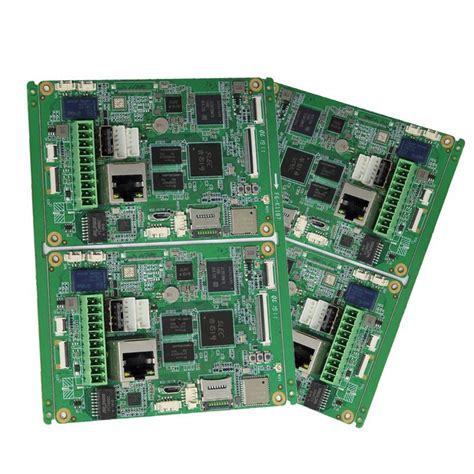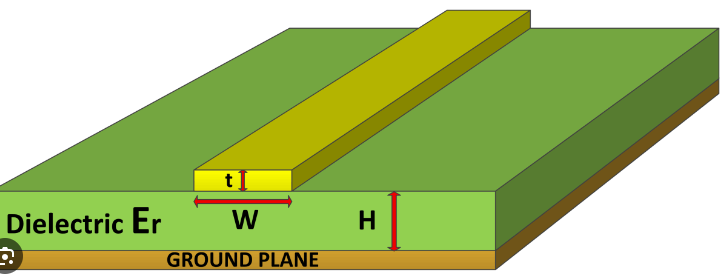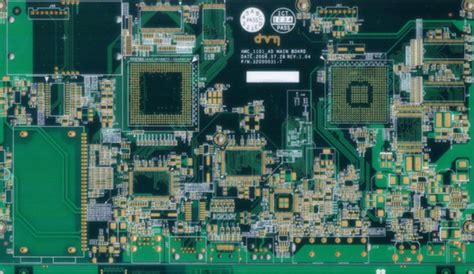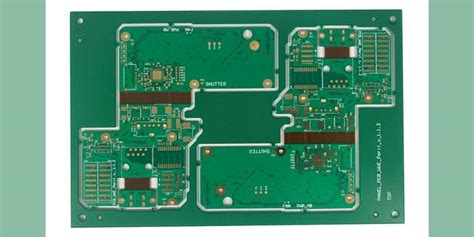Pcb prototype assembly china
Advantages Of Choosing Chinese Manufacturers For PCB Prototype Assembly
When considering the intricate process of PCB prototype assembly, selecting the right manufacturer is crucial to ensuring both quality and efficiency. In recent years, China has emerged as a leading hub for PCB prototype assembly, offering a myriad of advantages that make it an attractive option for businesses worldwide.
One of the primary benefits of choosing Chinese manufacturers is their unparalleled expertise and experience in the field.
Over the past few decades, China has invested heavily in developing its electronics manufacturing industry, resulting in a workforce that is highly skilled and knowledgeable about the latest technologies and techniques in PCB assembly. This expertise translates into high-quality products that meet international standards, providing businesses with the confidence that their prototypes will function as intended.
Moreover, Chinese manufacturers are known for their cost-effectiveness, which is a significant consideration for companies looking to optimize their budgets.
The competitive pricing offered by Chinese firms is largely due to the lower labor costs and economies of scale achieved through mass production. This affordability does not come at the expense of quality; rather, it allows businesses to allocate resources more efficiently, potentially investing in other areas such as research and development or marketing. Additionally, the cost savings can be particularly beneficial for startups and small businesses that may have limited financial resources but still require high-quality PCB prototypes to bring their innovations to market.
In addition to cost advantages, Chinese manufacturers offer impressive turnaround times, which are essential in today’s fast-paced business environment.
The ability to quickly produce and deliver PCB prototypes can significantly accelerate the product development cycle, allowing companies to test and refine their designs more rapidly. This speed is facilitated by the advanced manufacturing infrastructure in China, which includes state-of-the-art facilities and streamlined logistics networks. As a result, businesses can expect shorter lead times and faster delivery, enabling them to stay ahead of the competition and respond swiftly to market demands.
Furthermore, Chinese manufacturers provide a high degree of flexibility and customization, catering to the diverse needs of their clients.
Whether a company requires a small batch of prototypes for initial testing or a larger volume for more extensive trials, Chinese firms are equipped to handle varying production scales. This adaptability is complemented by their willingness to work closely with clients to tailor solutions that meet specific requirements, ensuring that the final product aligns with the intended design and functionality. Such collaboration fosters a strong partnership between the manufacturer and the client, ultimately leading to more successful outcomes.
Another notable advantage is the comprehensive range of services offered by Chinese manufacturers, which often extends beyond mere assembly.
Many firms provide end-to-end solutions, including design assistance, component sourcing, and testing services. This holistic approach simplifies the supply chain, reducing the need for multiple vendors and minimizing the risk of errors or miscommunications. By consolidating these services under one roof, businesses can enjoy a more seamless and efficient production process, further enhancing the overall value proposition of choosing a Chinese manufacturer for PCB prototype assembly.
In conclusion, the decision to partner with Chinese manufacturers for PCB prototype assembly is supported by a multitude of compelling advantages. From their expertise and cost-effectiveness to their speed, flexibility, and comprehensive service offerings, Chinese firms provide a robust solution for businesses seeking high-quality PCB prototypes. As the global market continues to evolve, these benefits position Chinese manufacturers as a preferred choice for companies aiming to innovate and succeed in the competitive landscape of electronics manufacturing.

Key Considerations When Selecting A PCB Prototype Assembly Service In China
When selecting a PCB prototype assembly service in China, several key considerations must be taken into account to ensure a successful partnership and high-quality outcomes. As the global leader in electronics manufacturing, China offers a plethora of options for PCB assembly services, making it crucial to navigate this landscape with a clear understanding of your specific needs and the capabilities of potential service providers.
First and foremost, it is essential to evaluate the technical capabilities of the assembly service.
This includes assessing their expertise in handling various types of PCBs, such as single-sided, double-sided, and multilayer boards. Additionally, consider their proficiency in working with different materials and technologies, such as surface mount technology (SMT) and through-hole technology (THT). A service provider with a broad range of technical skills can offer more flexibility and adaptability to meet your project’s unique requirements.
Moreover, the quality assurance processes employed by the assembly service are of paramount importance.
It is advisable to inquire about their quality control measures, such as automated optical inspection (AOI), X-ray inspection, and in-circuit testing (ICT). These processes help ensure that the assembled PCBs meet the highest standards of quality and reliability. Furthermore, certifications such as ISO 9001 and IPC-A-610 can serve as indicators of a company’s commitment to quality and industry standards.
In addition to technical capabilities and quality assurance, the cost-effectiveness of the service is a critical factor to consider.
While China is known for its competitive pricing, it is important to balance cost with quality. Opting for the cheapest option may lead to subpar results, which could ultimately incur higher costs due to rework or product failures. Therefore, it is prudent to obtain detailed quotes from multiple providers and carefully compare them, taking into account not only the price but also the value offered in terms of quality and service.
Another significant consideration is the lead time for prototype assembly.
Time-to-market is a crucial aspect of product development, and delays in the prototyping phase can have a ripple effect on the entire project timeline. It is essential to discuss lead times with potential service providers and ensure that they can meet your deadlines without compromising on quality. Additionally, consider their capacity to scale production if your project transitions from prototyping to full-scale manufacturing.
Communication and customer service also play a vital role in the selection process.
Effective communication is key to ensuring that your specifications and requirements are clearly understood and implemented. A service provider with a responsive and knowledgeable customer service team can facilitate smooth collaboration and promptly address any issues that may arise during the assembly process.
Finally, consider the geographical location and logistics of the assembly service. Proximity to major shipping hubs can reduce transportation costs and lead times, while a provider with experience in international shipping can help navigate customs and regulatory requirements more efficiently.
In conclusion, selecting a PCB prototype assembly service in China involves a comprehensive evaluation of technical capabilities, quality assurance, cost-effectiveness, lead times, communication, and logistics. By carefully considering these factors, you can establish a successful partnership that meets your project’s needs and contributes to the overall success of your product development efforts.

Innovations In PCB Prototype Assembly Technology In China
In recent years, China has emerged as a global leader in the field of printed circuit board (PCB) prototype assembly, driven by a combination of technological innovation, skilled labor, and strategic investments. The rapid advancements in this sector have not only enhanced the efficiency and precision of PCB manufacturing but have also positioned China as a pivotal player in the global electronics supply chain. As the demand for more sophisticated electronic devices continues to grow, the innovations in PCB prototype assembly technology in China are becoming increasingly significant.
One of the key innovations in this domain is the adoption of advanced automation technologies.
Chinese manufacturers have been quick to integrate robotics and artificial intelligence into their production lines, which has significantly reduced the time and cost associated with PCB assembly. Automation has enabled these manufacturers to achieve higher levels of precision and consistency, which are critical in the production of complex electronic components. Moreover, the use of AI-driven systems allows for real-time monitoring and quality control, ensuring that any defects are identified and rectified promptly, thereby minimizing waste and enhancing overall productivity.
In addition to automation, the development of new materials has played a crucial role in advancing PCB prototype assembly technology in China.
Researchers and manufacturers are continually exploring innovative materials that offer improved thermal management, electrical conductivity, and mechanical strength. These materials not only enhance the performance of PCBs but also contribute to their miniaturization, a trend that is particularly important as electronic devices become smaller and more powerful. The ability to produce compact and efficient PCBs is a significant competitive advantage for Chinese manufacturers, enabling them to meet the evolving needs of the global electronics market.
Furthermore, the implementation of cutting-edge design software has revolutionized the PCB prototype assembly process.
Chinese companies are leveraging sophisticated design tools that allow for the rapid prototyping and testing of PCBs. These tools facilitate the creation of highly detailed and accurate designs, which can be quickly modified and optimized based on testing results. This iterative process significantly reduces the time from concept to production, allowing manufacturers to respond swiftly to market demands and technological advancements.
Another noteworthy innovation is the emphasis on sustainable manufacturing practices.
As environmental concerns become increasingly prominent, Chinese PCB manufacturers are adopting eco-friendly production methods. This includes the use of lead-free soldering techniques, recycling of materials, and the implementation of energy-efficient processes. By prioritizing sustainability, these manufacturers are not only reducing their environmental footprint but also aligning with global standards and regulations, thereby enhancing their competitiveness in international markets.
The collaborative ecosystem in China also plays a vital role in fostering innovation in PCB prototype assembly.
The close proximity of suppliers, manufacturers, and research institutions facilitates the exchange of ideas and technologies, leading to continuous improvements in production processes and product quality. This collaborative environment, coupled with strong government support and investment in research and development, ensures that China remains at the forefront of PCB technology innovation.
In conclusion, the innovations in PCB prototype assembly technology in China are reshaping the landscape of the electronics manufacturing industry. Through the integration of automation, the development of new materials, the use of advanced design software, and a commitment to sustainability, Chinese manufacturers are setting new standards for efficiency, precision, and environmental responsibility. As these trends continue to evolve, China is poised to maintain its leadership position in the global PCB market, driving further advancements and meeting the ever-growing demands of the digital age.
Cost-Effective Strategies For PCB Prototype Assembly In China
In the rapidly evolving world of electronics, the demand for efficient and cost-effective printed circuit board (PCB) prototype assembly has never been higher. China, as a global leader in electronics manufacturing, offers a plethora of opportunities for businesses seeking to optimize their PCB prototype assembly processes. Understanding the cost-effective strategies available in China can significantly enhance a company’s competitive edge while maintaining high-quality standards.
To begin with, one of the primary strategies for achieving cost-effectiveness in PCB prototype assembly in China is leveraging the country’s extensive manufacturing infrastructure.
China’s well-established supply chain network provides access to a wide range of materials and components at competitive prices. By sourcing locally, companies can reduce transportation costs and minimize lead times, thereby accelerating the prototyping process. Furthermore, the concentration of specialized suppliers and manufacturers in regions such as Shenzhen allows for seamless collaboration and integration, which can further drive down costs.
In addition to the robust supply chain, the availability of skilled labor in China is another critical factor contributing to cost-effective PCB prototype assembly.
The country’s workforce is not only abundant but also highly trained in the latest manufacturing techniques and technologies. This expertise enables manufacturers to maintain high production standards while keeping labor costs relatively low compared to other regions. By capitalizing on this skilled labor pool, companies can ensure that their prototypes are assembled with precision and efficiency, ultimately leading to cost savings.
Moreover, the adoption of advanced manufacturing technologies in China plays a pivotal role in reducing costs associated with PCB prototype assembly.
Automation and the use of state-of-the-art equipment have become increasingly prevalent in Chinese manufacturing facilities. These technologies enhance production efficiency by minimizing human error and reducing the time required for assembly. Consequently, companies can achieve faster turnaround times and lower production costs, which are crucial for staying competitive in the fast-paced electronics market.
Another strategy for cost-effective PCB prototype assembly in China involves engaging with experienced local partners.
Collaborating with established Chinese manufacturers who have a deep understanding of the local market can provide invaluable insights and guidance. These partners can assist in navigating regulatory requirements, optimizing design for manufacturability, and identifying cost-saving opportunities throughout the assembly process. By leveraging their expertise, companies can avoid common pitfalls and ensure a smooth and cost-efficient prototyping experience.
Furthermore, it is essential for companies to adopt a strategic approach to order volume and batch size when working with Chinese manufacturers.
While larger orders often benefit from economies of scale, smaller batches can offer greater flexibility and reduce the risk of overproduction. By carefully balancing order size with demand forecasts, companies can optimize their production schedules and minimize excess inventory costs. This approach not only enhances cost-effectiveness but also allows for more agile responses to market changes and customer needs.
In conclusion, the pursuit of cost-effective PCB prototype assembly in China is a multifaceted endeavor that requires a strategic approach. By leveraging China’s extensive manufacturing infrastructure, skilled labor force, advanced technologies, and experienced local partners, companies can achieve significant cost savings while maintaining high-quality standards. Additionally, adopting a flexible approach to order volume and batch size can further enhance cost-effectiveness and responsiveness. As the electronics industry continues to evolve, these strategies will remain crucial for companies seeking to thrive in the competitive global market.







